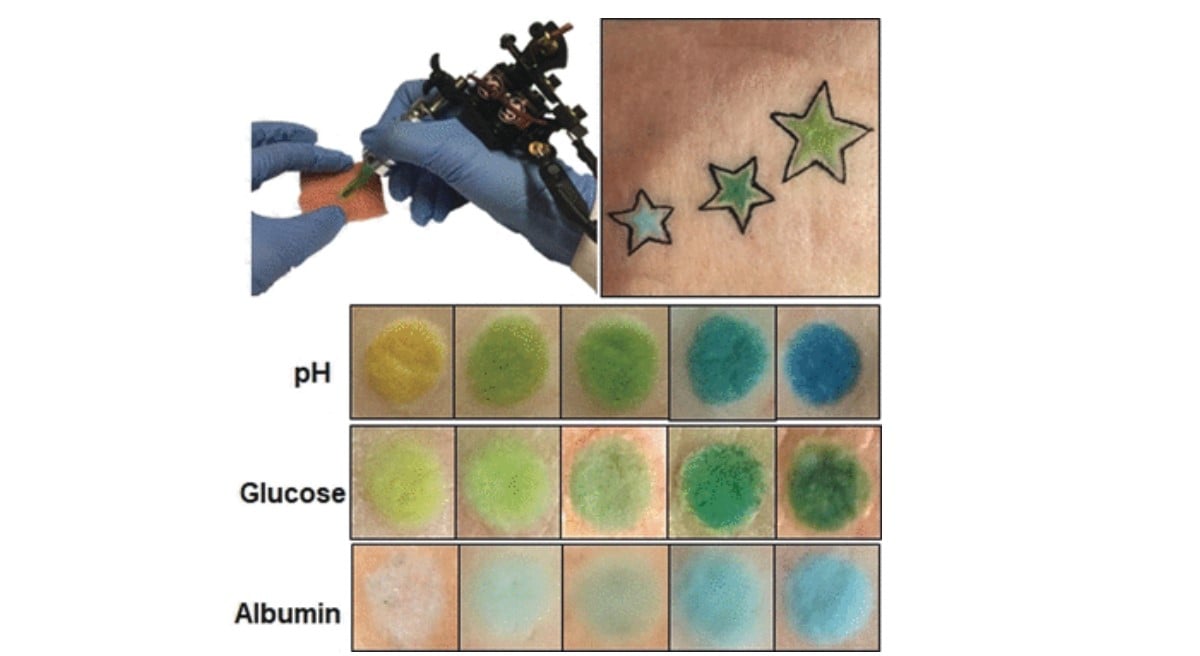A group of scientists in Germany developed color-changing tattoos which can indicate metabolic changes. While the previously-developed electronic tats analyzed blood so users wouldn’t have to schedule a doctor appointment, the newly-developed color-changing tattoos can help detect changes in glucose, albumin and pH value levels.
The team led by chemical engineer Ali Yetisen at the Technical University of Munich described their findings in the journal Angewandte Chemie International Edition. While the tattoos haven’t yet been tested on human skin, they yielded great results on pig skins, enabling scientists to track concentrations of biomarkers.
Using smartphone photos of the tattoos, scientists were able to estimate changes in concentrations based on the colors that displayed every time a change was detected.
Scientists said in a statement that the dyes they used aren’t yet reversible, but that in the future, they can be. This technology could promise more applications in personalized medicine.
“Body modification by injecting pigments into the dermis layer is a custom more than 4000 years old,” the researchers wrote in their paper.
Scientists track the three biomarkers using color-changing tattoos because they are one of the most important indicators of metabolic processes in our body. Albumin is a protein in blood plasma, and low concentration can indicate kidney or liver problems. On the other hand, if albumin levels are too high, the patient could have heart problems.
Glucose is one of the most important biomarkers in our body, and all modern technologies should focus on making monitoring it easier. Glucose levels are used for diabetes detection and management. Finally, pH levels indicate if blood is more acidic if they are lower than 7 or alkaline if it’s higher than that. Changes in the pH value are caused by different conditions which require a visit to the doctor.
To track these biomarkers, scientists created color-changing tatoos that can detect changes in the interstitial fluid as it leaks out of the blood vessels, filling spaces between cells. If the color-changing tattoo detects a change in the albumin level, it will become green. The greener it becomes, the higher the albumin level. Changes in glucose levels cause a structural change from yellow to dark green, while the pH sensor, which uses methyl red, bromothymol blue and phenolphthalein dyes, indicated pH values between five and nine by changing from yellow to blue.
While this solution yields great results, it’s not ready for human use yet. One of the main reasons is because only the pH indicator colors are reversible. Further research will help scientists determine how to reverse all the colors and finally test the color-changing tattoos on humans.





